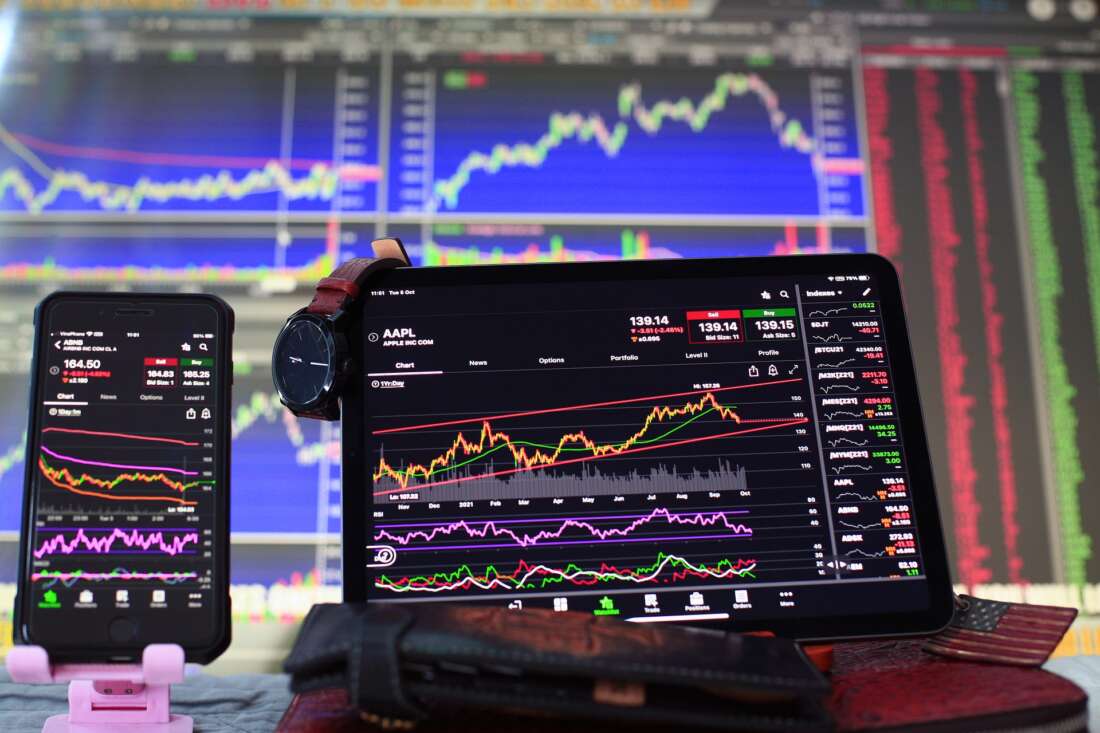
Charts in trading visually represent historical prices that allow traders to observe and analyze the history of security’s trading prices, volume, and market sentiment. You can use charts to make informed trading decisions based on this information.
Types of charts
There are many types of charts used in trading foreign securities.
Candlestick charts
Candlestick charts or Japanese candlesticks are graphed open/close/high/low of the day with a candlestick’s body ‘/wick’ candle colours often indicate past trends in prices. For example, green indicates an increase in price over a given period line graphs can be used to track stock prices over time.
The height of the wick is not considered for calculations. For example, if the yen were trading at 100 yesterday, 110 today and 90 yesterday, it would be graphed as 100/110/90 (long white candle), but it wouldn’t be graphed as 100/100/90 (two medium length candles).
Candle colours are often used to indicate past trends in prices. For instance, green indicates an increase in price over a given period, red suggests a decrease, and white implies no change in price.
Candlesticks vary widely in style, with the most popular being the ‘marubozu’, composed of a long body. A ‘ doji ‘ has about the same open and closing price, but there are no highs or lows for that period. A ‘ spinning top’ has an extremely short wick, which was once referred to as a “dead candle” for how it looks.
Line graphs
You can use a line graph to track stock prices over time. The slope of the line created by connected data points shows whether prices are increasing (rising) or decreasing (falling). If dots on a line graph rise equally above their axis, then the price rise is considered flat; if one dot rises higher than all others, that means there was a price increase.
Chart patterns, such as ‘ cup and handle ‘, ‘ double top ‘ and ‘ head and shoulders,’ can all be used to make determinations about future movements in the market, which is helpful for traders
Bar graphs
Bar graphs show a trading summary during a given period, such as one day or one week. The high, low and closing prices are graphed at specific intervals: daily for daily bar charts, weekly for weekly bars and so forth.
A single day’s worth of data is represented by a “candle” or “bar” on the chart, with the long bits representing the entire candle or bar’s length if it covers more than one day of trading representing the high low for that day.
Benefits of using charts in trading
Charting is the essence of trading. While there are many indicators to help traders decide when to buy and sell, most people agree that nothing beats a good chart for spotting opportunities in the market.
Charts can show you patterns such as support and resistance, help you plan entry and exit points, detect trends and patterns, and do much more. Plus, they provide a visual representation of your data which lets you see things impossible to spot on a table of numbers alone.
Which chart is the best?
The two most popular types of charts are bar charts (also known as candlestick charts) and line charts. Line charts make it easier to see trends in movement, while bar charts show the opening and closing prices at the top and bottom of each line.
But there is no need to be overwhelmed by all these choices. You probably already have one form of a chart that you prefer to use over all others, so stick with that!
Final word
If charts are so valuable, what makes one chart better than another? There’s no simple answer. Like everything in trading, it depends on the individual trader and the situation they’re trying to analyze. If you are interested in futures trading, contact a reputable online broker from Saxo Bank to help you get started.

